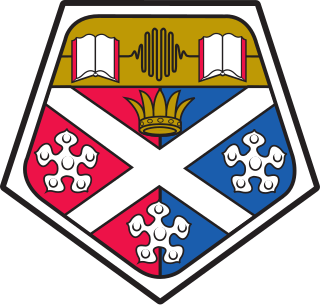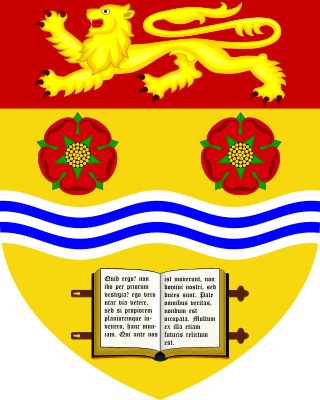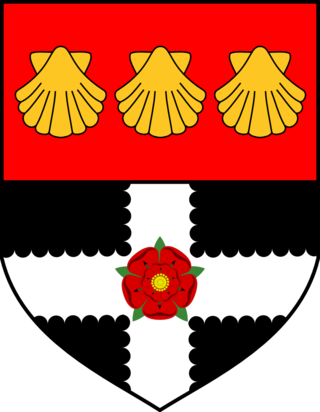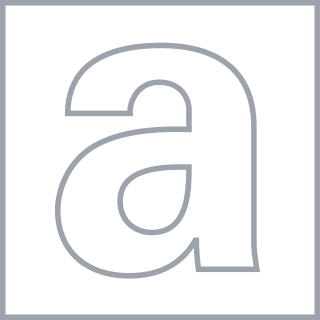Related Research Articles
Mathematics is an area of knowledge that includes the topics of numbers, formulas and related structures, shapes and the spaces in which they are contained, and quantities and their changes. These topics are represented in modern mathematics with the major subdisciplines of number theory, algebra, geometry, and analysis, respectively. There is no general consensus among mathematicians about a common definition for their academic discipline.

The Universal Decimal Classification (UDC) is a bibliographic and library classification representing the systematic arrangement of all branches of human knowledge organized as a coherent system in which knowledge fields are related and inter-linked. The UDC is an analytico-synthetic and faceted classification system featuring detailed vocabulary and syntax that enables powerful content indexing and information retrieval in large collections. Since 1991, the UDC has been owned and managed by the UDC Consortium, a non-profit international association of publishers with headquarters in The Hague, Netherlands.

The University of Bristol is a red brick Russell Group research university in Bristol, England. It received its royal charter in 1909, although it can trace its roots to a Merchant Venturers' school founded in 1595 and University College, Bristol, which had been in existence since 1876.
The Leaving Certificate Examination, commonly referred to as the Leaving Cert or (informally) the Leaving, is the final exam of the Irish secondary school system and the university matriculation examination in Ireland. It takes a minimum of two years' preparation, but an optional Transition Year means that for those students it takes place three years after the Junior Cycle examination. These years are referred to collectively as "The Senior Cycle". Most students taking the examination are aged 16–19; in excess of eighty percent of this group undertake the exam. The Examination is overseen by the State Examinations Commission. The Leaving Certificate Examinations are taken annually by approximately 60,000 students.

The University of St Andrews is a public university in St Andrews, Scotland. It is the oldest of the four ancient universities of Scotland and, following the universities of Oxford and Cambridge, the third-oldest university in the English-speaking world. St Andrews was founded in 1413 when the Avignon Antipope Benedict XIII issued a papal bull to a small founding group of Augustinian clergy. Along with the universities of Glasgow, Aberdeen, and Edinburgh, St Andrews was part of the Scottish Enlightenment during the 18th century.

The University of Strathclyde is a public research university located in Glasgow, Scotland. Founded in 1796 as the Andersonian Institute, it is Glasgow's second-oldest university, having received its royal charter in 1964 as the first technological university in the United Kingdom. Taking its name from the historic Kingdom of Strathclyde, it is Scotland's third-largest university by number of students, with students and staff from over 100 countries.

Keele University, officially known as the University of Keele, is a public research university in Keele, approximately three miles from Newcastle-under-Lyme, Staffordshire, England. Founded in 1949 as the University College of North Staffordshire, Keele was granted university status by Royal Charter in 1962.

Lancaster University is a public research university in Lancaster, Lancashire, England. The university was established in 1964 by royal charter, as one of several new universities created in the 1960s.

Cardiff University is a public research university in Cardiff, Wales. It was established in 1883 as the University College of South Wales and Monmouthshire and became a founding college of the University of Wales in 1893. It merged with the University of Wales Institute of Science and Technology (UWIST) in 1988 as the University of Wales College, Cardiff. In 1997 it received degree-awarding powers, but held them in abeyance. It adopted the operating name of Cardiff University in 1999; this became its legal name in 2005, when it became an independent university awarding its own degrees.
The British undergraduate degree classification system is a grading structure for undergraduate degrees or bachelor's degrees and integrated master's degrees in the United Kingdom. The system has been applied in other countries and regions.

The University of Reading is a public research university in Reading, Berkshire, England. It was founded in 1892 as University College, Reading, a University of Oxford extension college. The institution received the power to grant its own degrees in 1926 by royal charter from King George V and was the only university to receive such a charter between the two world wars. The university is usually categorised as a red brick university, reflecting its original foundation in the 19th century.
In the Scottish secondary education system, the Higher is one of the national school-leaving certificate exams and university entrance qualifications of the Scottish Qualifications Certificate (SQC) offered by the Scottish Qualifications Authority. It superseded the old Higher Grade on the Scottish Certificate of Education (SCE). Both are normally referred to simply as "Highers".
Three national rankings of universities in the United Kingdom are published annually – by The Complete University Guide, The Guardian and jointly by The Times and The Sunday Times. Rankings have also been produced in the past by The Daily Telegraph and Financial Times. UK Universities also rank highly in global university rankings with 8 UK Universities ranking in the top 100 of the three major global rankings - QS World University Rankings, Times Higher Education World University Rankings and Academic Ranking of World Universities.

Arts University Bournemouth is a further and higher education university based in Poole, England, specialising in art, performance, design, and media. It was formerly known as The Arts University College at Bournemouth and The Arts Institute at Bournemouth and is the home of Bournemouth Film School.
The Mathematics Subject Classification (MSC) is an alphanumerical classification scheme that has collaboratively been produced by staff of, and based on the coverage of, the two major mathematical reviewing databases, Mathematical Reviews and Zentralblatt MATH. The MSC is used by many mathematics journals, which ask authors of research papers and expository articles to list subject codes from the Mathematics Subject Classification in their papers. The current version is MSC2020.

The A-level is a subject-based qualification conferred as part of the General Certificate of Education, as well as a school leaving qualification offered by the educational bodies in the United Kingdom and the educational authorities of British Crown dependencies to students completing secondary or pre-university education. They were introduced in England and Wales in 1951 to replace the Higher School Certificate. The A-level permits students to have potential access to university if their grade is of satisfactory quality.
The Cambridge Pre-U is a school leaving qualification from Cambridge Assessment International Education that is an alternative to the current A Level qualification. It is principally aimed at students aged 16–19, and has recognition for university entrance.
The General Certificate of Education (GCE) Advanced Level, or A Level, is a main school leaving qualification in England, Wales, Northern Ireland, the Channel Islands and the Isle of Man. It is available as an alternative qualification in other countries.
Mathematics is a field of study that investigates topics such as number, space, structure, and change.
The national qualification frameworks in the United Kingdom are qualifications frameworks that define and link the levels and credit values of different qualifications.
References
- 1 2 "Farewell to JACS, and hello to HECoS". HESA. 27 April 2017. Retrieved 10 May 2017.
- ↑ "JACS 3.0: Principal subject codes". HESA. Retrieved 9 May 2017.
- ↑ "Full list of the current variables". UCAS. November 2016. Retrieved 10 May 2017.
Please note: the course code is assigned to each course by the host provider and does not necessarily relate to JACS subject codes.
[ permanent dead link ] - ↑ "Classifying subject of study: A roadmap to a new Joint Academic Coding System" (PDF). Higher Education Data and Information Improvement Programme. July 2013. p. 29. Retrieved 10 May 2017.
- ↑ "Course coding principles". UCAS. Archived from the original on 20 December 2010. Retrieved 10 May 2017.
- ↑ "Mathematics and Physics – University of Edinburgh". UCAS. Retrieved 9 May 2017.[ permanent dead link ]
- ↑ "Mathematics and Physics – University of Manchester". UCAS. Retrieved 10 May 2017.[ permanent dead link ]
- ↑ "Mathematics and Physics – University of Bristol". UCAS. Retrieved 10 May 2017.[ permanent dead link ]
- ↑ "Mathematics and Physics – University of Surrey". UCAS. Retrieved 10 May 2017.[ permanent dead link ]
- ↑ "Mathematics and Physics – University of Surrey (sandwich)". UCAS. Retrieved 10 May 2017.[ permanent dead link ]
- ↑ "Music and Philosophy – University of Nottingham". UCAS. Retrieved 10 May 2017.
- ↑ "Music and Philosophy – University of Sheffield". UCAS. Retrieved 10 May 2017.
- ↑ "Music and Philosophy – Durham University". UCAS. Retrieved 9 May 2017.[ permanent dead link ]
- ↑ "Astronomy and Physics – University of Glasgow". UCAS. Retrieved 9 May 2017.